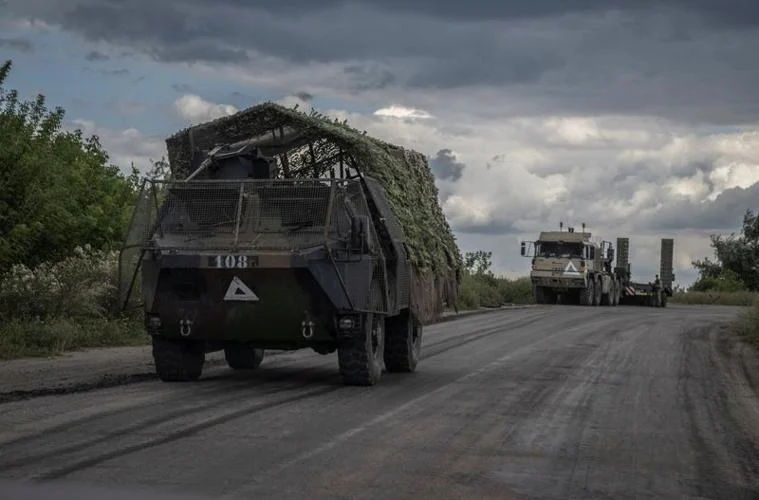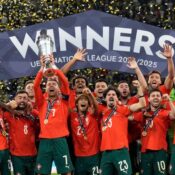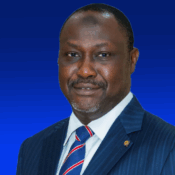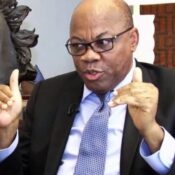
Putin claims that the goal of Ukraine’s attack on Russia is to negotiate a cease-fire
On Monday, President Vladimir Putin declared that Ukraine’s largest offensive on Russian territory since the start of the war was meant to impede the advance of Russian forces and strengthen Kyiv’s negotiation position ahead of prospective peace talks.
Last Tuesday, Ukrainian forces drove over some western areas of Russia’s Kursk region and slammed through the Russian border, a surprise strike exposing the frailty of Russian border defenses in the vicinity.
In his most thorough public comments on the incursion thus far, Putin said Ukraine “with the help of its Western masters” was seeking to improve its position ahead of any negotiations.
He wondered what negotiations with an opponent he claimed to have fired indiscriminately at Russian citizens and nuclear installations could yield.
“The main task, of course, is for the defense ministry to squeeze out, to knock out the enemy from our territories,” Putin said, noting that Russian forces were advancing fast along the rest of the 1000-km (620-mile) main front.
“The enemy will absolutely get a worthy response,” he remarked.
He also expressed his expectation of more Ukrainian measures to compromise Russia’s Western border.
Russian authorities claim Ukraine is aiming to demonstrate to its Western supporters that it can still summon significant military operations precisely as pressure on Moscow and Kyiv to agree to discuss stopping the war grows.
Russia invaded Ukraine in February 2022 under what it claimed to be a special military operation; today, it owns 18% of Ukrainian land. Ukraine has been losing territory to Russian forces even with hundreds of billions in U.S. and European support meant to stop and perhaps reverse the Russian advance before the surprise strike on Russia.
One Russian source with knowledge of official thinking claimed that by striking Russia, Ukraine was empowering hardliners claiming that any truce negotiations were a waste of time and that Russia should advance far more into Ukraine.
Attack on Borders
Last Monday, Sergei Shoigu, Russia’s security council secretary, reported that since June 14 Russia had acquired 420 square kilometres (162 square miles) of territory from Ukrainian soldiers.
Ukraine has just managed to carve out an equivalent amount of territory, though. Alexei Smirnov, the acting governor of Kursk, claimed Ukraine controlled 28 communities in the area and the incursion covered 40 km broad and was roughly 12 km deep.
Moscow and Kyiv have hinted that they are considering a stop although in public both are still far apart on what a truce may look like after more than two years of the most severe ground conflict in Europe since World War Two.
Both are following the American election as well. Kyiv worries that if Republican Donald Trump prevails in the November presidential contest, U.S. assistance may wain.
Trump has declared he will call off the war, and Russia and Ukraine are eager to acquire the best possible negotiating leverage on the ground of conflict.
According to Reuters in February, the United States rejected Putin’s proposed ceasefire in Ukraine to stop the fighting. Putin proposed probable parameters in June that Kyiv should relinquish its aspirations for NATO and remove all of its forces from four areas claimed by Moscow.
Following negotiations with China, Ukrainian Foreign Minister Dmytro Kuleba declared last month that Kyiv was ready for negotiations on the dispute with Russia if Ukraine’s sovereignty and territorial integrity were completely respected.
Kyiv claims it has to take control over all the territory it lost to Russia and is victim of an imperial-style land grab by Putin. The West declares it cannot let Putin prevail.
In his June 14 speech, Putin opens fresh tab, presents the war as part of a historic struggle with an arrogant West, which he said had neglected Russia’s security concerns after the 1991 fall of the Soviet Union and plotted to dismember Russia.
Sharp Fighting
For Putin’s top military brass, who has consistently been attacked inside Russia by nationalists for its handling of the conflict, such a bold move against the world’s largest nuclear power was embarrassing.
Former Ukrainian defense minister Andriy Zagorodnyuk told Reuters the operation appeared meant to divert Russian forces and their leadership from the eastern front.
Russia had stabilised the front in the Kursk area by Sunday, but it had been obliged to call reserves to action and proclaim an anti-terrorism lockdown in Kursk and two other areas, Bryansk and Belgorod.
“Our armed forces are advancing along the whole line of contact,” Putin declared.
Reuters hasn’t been able to confirm battlefield assertions.
Fears of a Ukrainian onslaught drove hundreds of people from the Krasnaya Yaruga District to Belgorod to the south.
Valery Gerasimov, Russia’s most senior general and chief of general staff, informed Putin on Wednesday that the Ukrainian onslaught had stopped in the border region.
Russian bloggers have asked why Ukraine was able to infiltrate the Kursk area so readily and why it took so long to get things under control.
While severe fights were raging close to Korenevo, roughly 22km (14 miles), and Martynovka, Ukrainian forces in Kursk were aiming to encircle Sudzha, where Russian natural gas flows into Ukraine.
The Russian rouble has slumped, shedding 6% of its value against the U.S. dollar since the Aug. 6 border invasion into Kursk. On Monday, Russia’s Gazprom declared it will deliver 39.6 million cubic metres (mcm) of gas to Europe via Ukraine.
All Categories
Recent Posts
Tags
+13162306000
zoneyetu@yahoo.com



